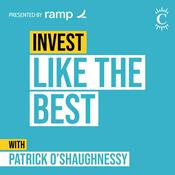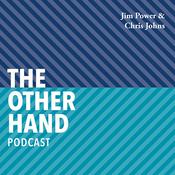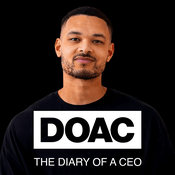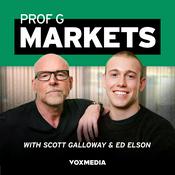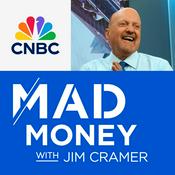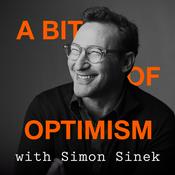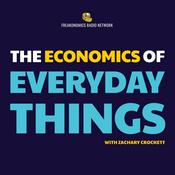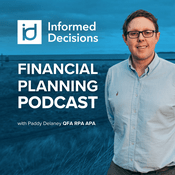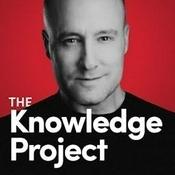239 episodes
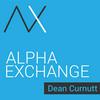
Ian Harnett, Co-Founder and Chief Investment Strategist, Absolute Strategy Research
19/12/2025 | 55 mins.
It was a pleasure to welcome Ian Harnett, co-founder and Chief Investment Strategist at Absolute Strategy Research, to the Alpha Exchange. Our discussion explores how long periods of low volatility and abundant liquidity can quietly allow systemic risks to accumulate outside the traditional banking system. Drawing on lessons from the Global Financial Crisis, Ian explains why today’s financial system—now dominated by non-banks rather than banks—requires a different risk framework. While post-GFC regulation focused on large banks and insurers, much of the system’s leverage and liquidity transformation has migrated toward pension funds, private equity, insurance companies, and private credit vehicles. In the U.S. alone, roughly three-quarters of private-sector financial assets are now controlled by non-banks, reshaping how shocks can propagate through markets. A key theme of the discussion is that systemic risk is multiplicative rather than additive. Ian argues that past crises were often triggered not by the largest institutions, but by smaller nodes in the system that proved critical once stress emerged. Today, he highlights the growing role of private-equity-backed insurers, which tend to hold riskier assets, maintain lower capital buffers, and allocate more heavily to private credit—an area that remains largely illiquid and difficult to mark to market. Ian’s work emphasizes cash flow as a central lens for assessing vulnerability. I hope you enjoy this episode of the Alpha Exchange, my conversation with Ian Harnett.

Kumaran Vijayakumar, Co-Founder and CEO, DataDock Solutions
16/12/2025 | 52 mins.
Kumaran Vijayakumar has spent his career in the equity derivatives market, first as an exotics trader and later in running large risk-taking desks in listed and OTC options. Now, the CEO of DataDock Solutions, a firm he Co-Founded in 2018, Kumaran and his team are developing analytical tools that allow sell-side flow desks to better understand the risks they take and clients they take it for. Our discussion explores the challenges inherent in evaluating client flow, and how data-centric infrastructure has changed the way risk is assessed. With the premise that “what you can measure you can manage and improve”, we discuss DataDock’s efforts to build tools capable of ingesting large-scale trade history and simulating outcomes at the most granular level. In equity derivatives, where trades move quickly and visibility is often instantaneous, desks have historically made decisions based on memory and anecdotal assessments of “good” versus “bad” flow. Kumaran describes this as a space where information is abundant, but structured insight often lags execution speed. Our discussion highlights a key theme: not all flow that loses money is detrimental, and not all flow that is profitable is necessarily strategic. Instead, Kumaran notes that client value emerges when one analyzes trade behavior across time, including delta hedge quality, volume risk transfer, roll probability, expected event-driven distribution, and the role of flow as portfolio offset rather than standalone P&L. I hope you enjoy this episode of the Alpha Exchange, my conversation with Kumaran Vijayakumar.

Mark Rosenberg, Founder and Co-Head, Geoquant
12/12/2025 | 55 mins.
Risk generally falls into 4 categories, monetary (Central Banks), economic (growth and profits), financial (leverage, carry and correlation) and finally, geopolitical. This last category is non-market, market risk. And in this context, it was a pleasure to welcome Mark Rosenberg, Founder of GeoQuant and adjunct professor at UC Berkeley to the Alpha Exchange for a discussion centered on political risk as a measurable market variable.Mark’s work evaluates how governance, social instability, institutional stress, and security dynamics influence asset pricing. Tracing his path from academia to his time at Eurasia Group, he describes the gap that existed in country-risk assessment—macroeconomic indicators were abundant, yet political inputs remained qualitative, backward-looking, and infrequent. His motivation for launching GeoQuant followed the belief that political dynamics could be structured into model-based, data-driven signals rather than anecdotes, expert impressions, or slow annual indicators.GeoQuant separates political risk into governance, social, and security components, drawing from quantitative indicators, news-driven updates, and structural model frameworks. Geopolitical risk conjures referendums like Brexit, countries like Russia, China and Iran, conflicts like trade wars and actual wars. The United States does not come to mind. But looking ahead to the 2026 midterm cycle, Mark describes a US landscape defined by elevated turnover risk, the potential for policy conflict, and a political structure capable of generating prolonged uncertainty, a risk factor that may not be sufficiently priced into assets.I hope you enjoy this episode of the Alpha Exchange, my conversation with Mark Rosenberg.

Todd Rapp, CEO, Fortress Multi-Manager Group
09/12/2025 | 43 mins.
Todd Rapp got his career started in equity options at Goldman Sachs in the late 1990’s, a wild time in which a bubble inflated and burst and provided critical lessons in both gamma and vega risk in the process. Now the CEO of the Fortress Multi-Manager Group, Todd leans heavily on his derivatives DNA in the areas of sourcing uncorrelated return streams, portfolio construction and both measuring and managing risk. Early training has shaped his long-term view that markets express probability through delta, option curvature, and distribution structure rather than through static price movements.Our conversation connects early risk management lessons to today’s landscape, where market concentration echoes 1999, yet correlation conditions differ meaningfully. Todd notes that unlike the prior cycle, today’s equity index shows low intra-index correlation, making dispersion, risk sizing, and factor neutrality more fundamental for return generation.We also explore how the multi-manager architecture seeks to harness uncorrelated strategies packaged with capital efficiency and leverage, producing return streams engineered to operate through dispersion. Todd highlights how understanding optionality remains central to managing equity factor shocks, beta instability, and correlation convergence events.Lastly, we touch on the human capital side of building a business. Having interviewed hundreds of risk takers over the years, Todd looks for individuals who have something to prove, suggesting that having experienced adversity is important because, “if you don’t have a significant drawdown in your past, it’s in your future.”I hope you enjoy this episode of the Alpha Exchange, my conversation with Todd Rapp.

Jessica Stauth, CIO, Systematic Equity, Fidelity Investments
02/12/2025 | 53 mins.
It was a pleasure to welcome Jessica Stauth, CIO for Systematic Equities at Fidelity Investments, to the Alpha Exchange. Our discussion explores how quant investing has evolved through cycles of market stress, technological change, and today’s extraordinary concentration in the equity landscape. Reflecting on her start in markets in the aftermath of the 2007 Quant Quake and the onset of the global financial crisis, Jessica highlights the foundational lesson that markets contain far more uncertainty than models can fully capture — a theme as relevant today as investors confront narrow leadership and elevated fragility. She explains how early dislocations demonstrated the limits of traditional risk models and the dangers of crowding, especially when many quantitative strategies rely on similar signals or hedging techniques. Turning to the present, Jessica describes how her team builds equity strategies designed to function across regimes, emphasizing the need for diversified risk models, guardrails that prevent overfitting, and a clear understanding of how macro shocks can overwhelm bottom-up stock selection. She details the evolution of factor research, including the durability of broad categories such as value, momentum, and quality, while outlining how competition and data availability reshape their effectiveness over time. Lastly, she discusses the growing role of non-traditional data — from earnings-call text to machine-learning tools and LLM-driven sentiment extraction — while underscoring the importance of broad, consistent datasets that can be applied across global universes. Against the backdrop of the S&P 500’s heavy top-weighting, Jessica details how diminished breadth affects opportunity sets, investor demand for alternative approaches, and the search for alpha outside the most crowded areas of the market. I hope you enjoy this episode of the Alpha Exchange, my conversation with Jessica Stauth.
More Business podcasts
Trending Business podcasts
About Alpha Exchange
Listen to Alpha Exchange, Life and Leadership Podcast and many other podcasts from around the world with the radio.net app

Get the free radio.net app
- Stations and podcasts to bookmark
- Stream via Wi-Fi or Bluetooth
- Supports Carplay & Android Auto
- Many other app features
Get the free radio.net app
- Stations and podcasts to bookmark
- Stream via Wi-Fi or Bluetooth
- Supports Carplay & Android Auto
- Many other app features


Alpha Exchange
download the app,
start listening.


